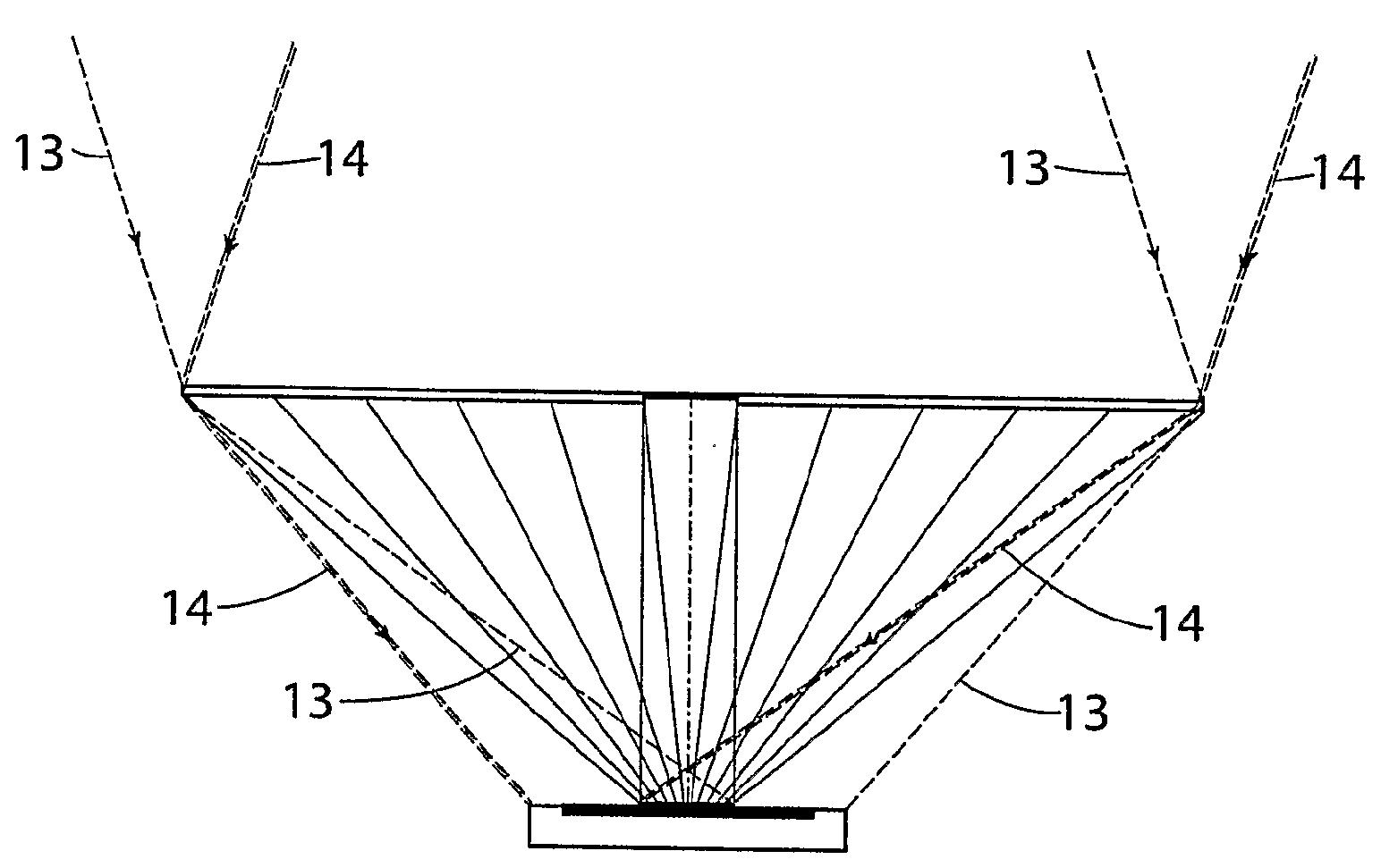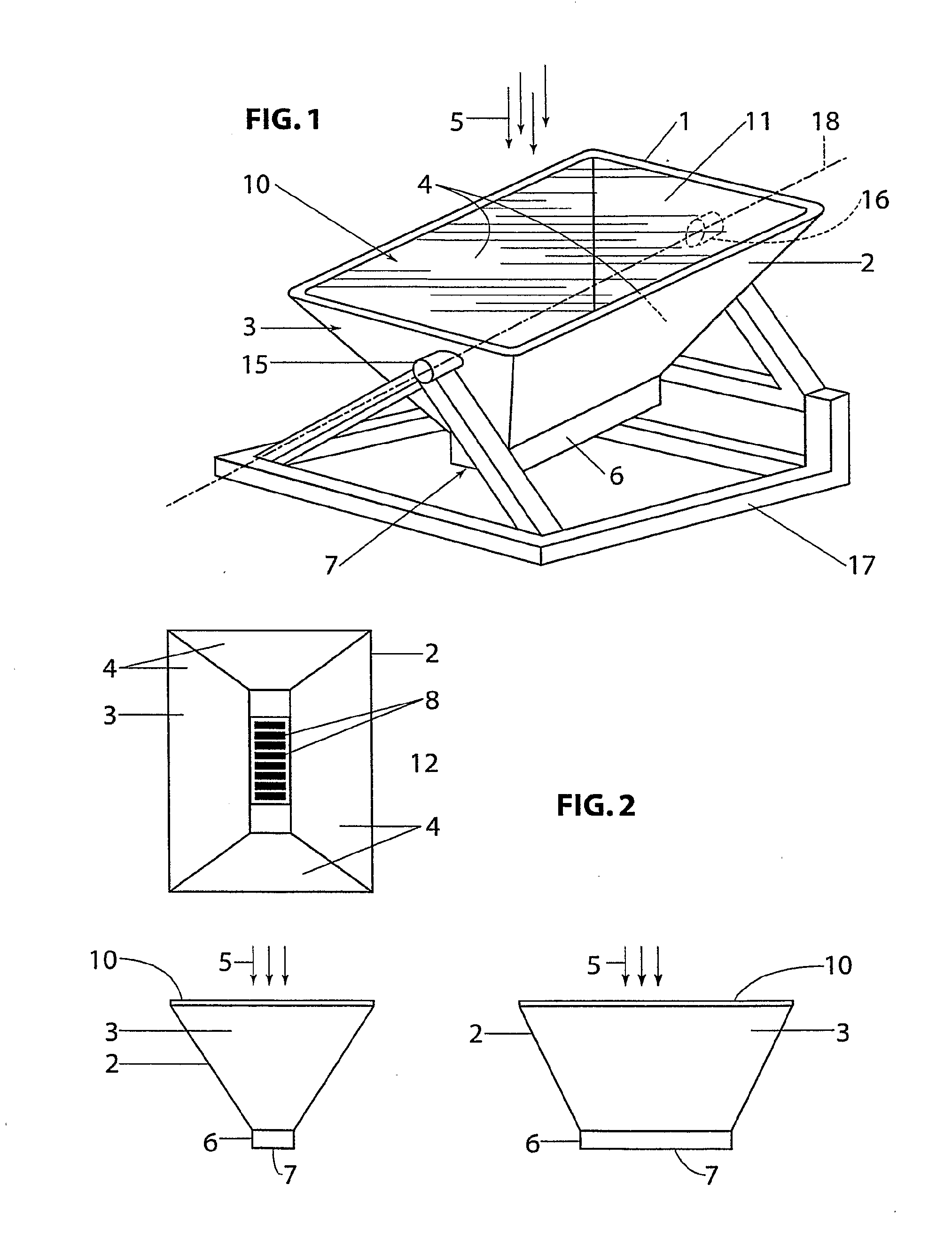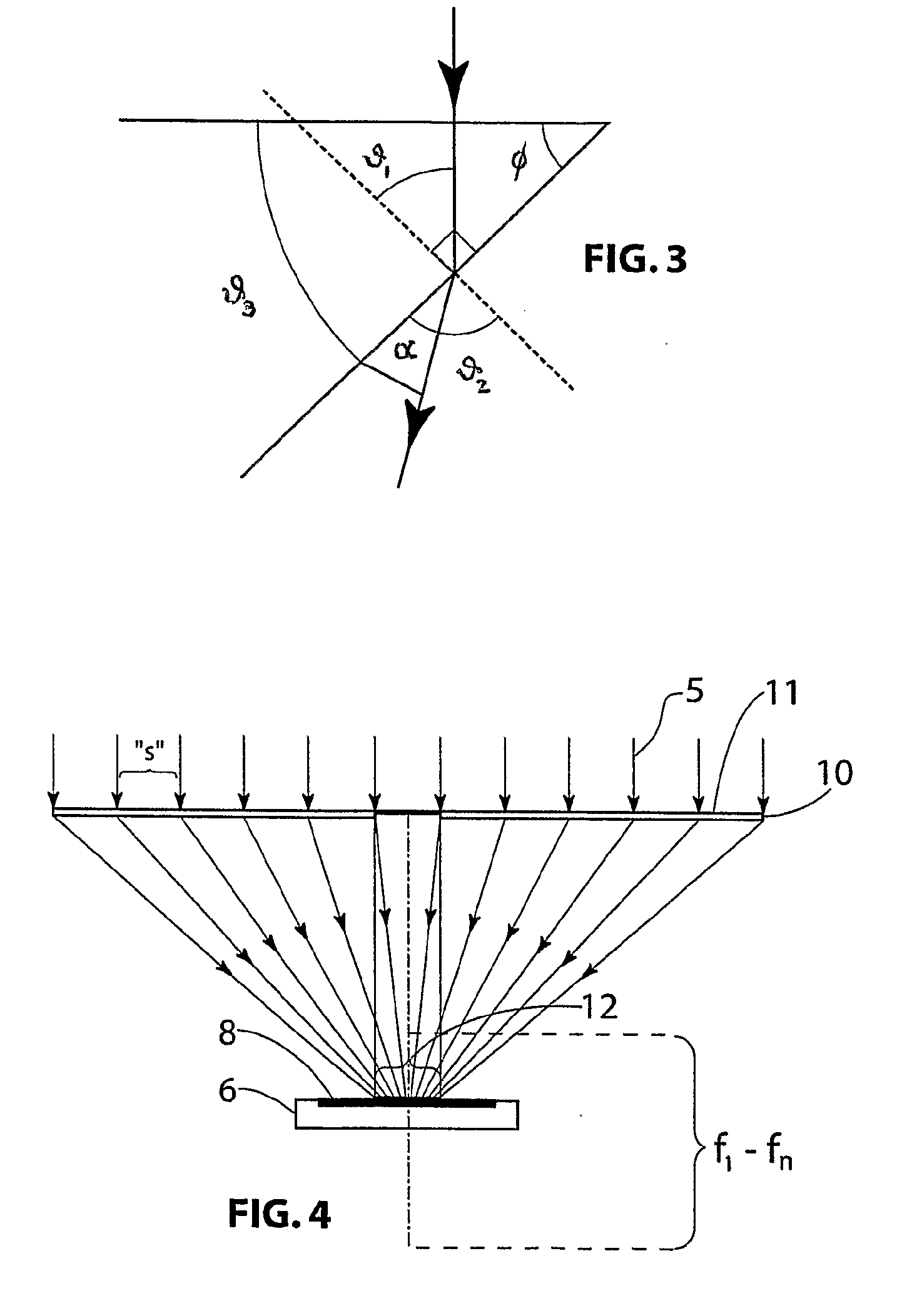Solar energy collection system
a solar energy and collection system technology, applied in the direction of pv power plants, hybrid energy generation, lighting and heating apparatus, etc., can solve the problems of increasing the cost of current pv cells for households, prohibitively expensive provision of tracking systems, and reducing the power produced, so as to improve the efficiency of use of pv cells, increase the operating temperature of cells, and minimize losses
- Summary
- Abstract
- Description
- Claims
- Application Information
AI Technical Summary
Benefits of technology
Problems solved by technology
Method used
Image
Examples
Embodiment Construction
[0043]One embodiment of the present invention includes 4 elements, namely:
[0044]Fresnel Lens,
[0045]Collection Cradle with PV cell array,
[0046]Cooling System providing Preheated Water, and
[0047]Sun Tracking System
These are further disclosed herein below.
1. Overall System
[0048]The present invention, and its various aspects:[0049]Utilizes a specifically designed Fresnel type lens to concentrate the sun's radiation onto photovoltaic cells to produce electrical energy,[0050]Applies at least one strip of photovoltaic cells to the base of a walled cradle. The length of the strip is determined by the location of the system in the world, relative to the conditions of the sun's rotation to that location. The walls of the cradle are preferably reflective to increase the energy collection by virtue of the walls reflecting additional light onto the cells and / or to offset any variation in sunlight due to clouds in the north-south direction and any seasonal variations in the latitude of the sun. T...
PUM
 Login to View More
Login to View More Abstract
Description
Claims
Application Information
 Login to View More
Login to View More - R&D
- Intellectual Property
- Life Sciences
- Materials
- Tech Scout
- Unparalleled Data Quality
- Higher Quality Content
- 60% Fewer Hallucinations
Browse by: Latest US Patents, China's latest patents, Technical Efficacy Thesaurus, Application Domain, Technology Topic, Popular Technical Reports.
© 2025 PatSnap. All rights reserved.Legal|Privacy policy|Modern Slavery Act Transparency Statement|Sitemap|About US| Contact US: help@patsnap.com



